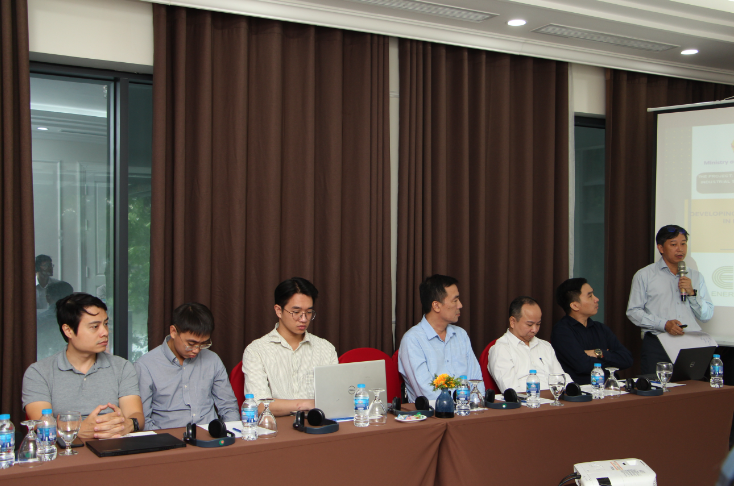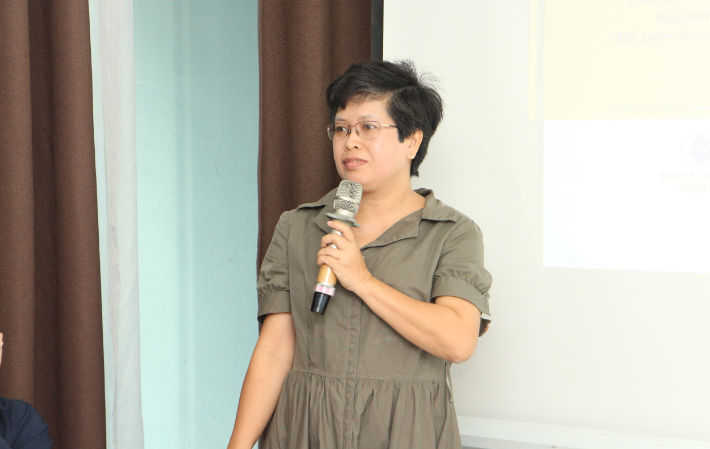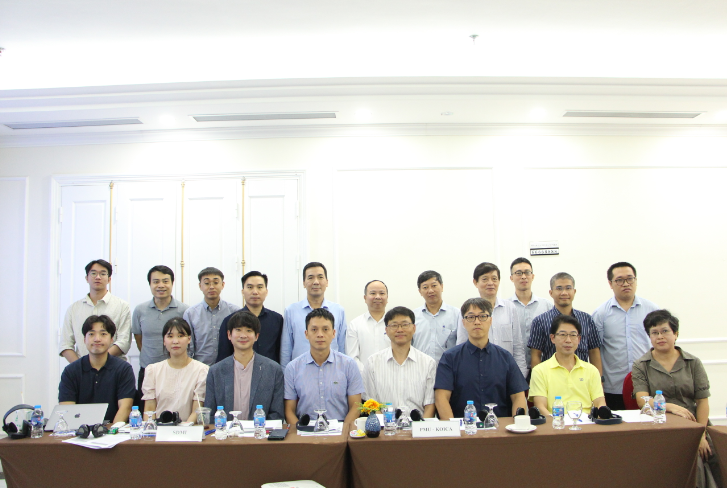Technical Consultation on Energy Consumption Standards Revision for the Paper and Pulp Industry
Thứ ba, 17/09/2024 - 13:25
Paper industry enterprises account for about 5% of total energy consumption across all industrial sectors, focusing on three key products: packaging paper, tissue paper, and uncoated printing and writing paper.
The meeting was held as part of the project "Promoting the Energy Efficiency and Conservation Investment Market in the Industrial Sector and Supporting the Implementation of the Vietnam Green Growth Action Plan." The project is funded by the Korea International Cooperation Agency (KOICA) and hosted by the Ministry of Industry and Trade.

Mr. Lai Duc Tuan, Department of Energy Efficiency and Sustainable Development speeches at the meeting.
Mr. Lai Duc Tuan, a representative from the Department of Energy Efficiency and Sustainable Development (Ministry of Industry and Trade), discussed the project's objectives. From 2019 to 2023, Vietnam's paper industry saw significant growth, with production capacity increasing by 10.49% annually, production volumes rising by 13.28% per year, and consumption growing by 5.7% annually. Exports also surged by 33.64% annually. Paper enterprises consumed around 5% of total industrial energy, focusing on producing packaging paper, tissue paper, and uncoated printing paper.
In his speech, Mr. Lai Duc Tuan emphasized that KOICA’s support for revising energy consumption standards in the paper industry will contribute significantly to promoting energy savings within the sector.
Sharing insights on the potential for energy savings in the paper industry, Mr. Luong Duc Hieu, Chief of Office of the Vietnam Paper and Pulp Association, noted that globally, the paper industry ranks as the fifth-largest industrial energy consumer, accounting for 4% of global energy use annually.
As of 2023, Vietnam had around 500 paper and pulp enterprises. However, only 20 companies with large capacities accounted for approximately 65% of the industry's total capacity. With annual growth rates between 15-18%, the demand for energy in the paper industry is expected to rise significantly in the coming years, making energy savings a top priority. The potential for energy efficiency in this rapidly expanding industry is therefore substantial and crucial for its sustainable development.

The paper industry's growth rate reaches 15-18% annually and its energy demand will increase significantly in the upcoming period.
In this context, paper enterprises have implemented energy-saving measures based on the technical standards provided in Circular No. 24/2017/TT-BCT, issued on November 23, 2017, by the Ministry of Industry and Trade. By applying these measures, companies in the paper industry have managed to save substantial amounts of energy.
For instance, the Vietnam Paper Corporation reduced its energy consumption from 15,467 MJ/ton in 2020 to 12,623 MJ/ton in 2023. An Hoa Paper Joint Stock Company has the potential to save 9,932,443 kWh of electricity annually and 8,089.3 tons of coal per year, amounting to a financial saving of approximately 33.8 billion VND.
During the meeting, local experts presented the results of reviewing Circular No. 24 and proposed the benchmarking research method. The main goal of the project is to collect and calculate energy consumption data as input for developing the draft energy-saving plan, assessing the economic benefits of the proposed improvements, and setting future targets for enhancing energy efficiency.

Ms. Nguyen Thi Huong Lien, a representative from the Energy Conservation Research and Development Center (ENERTEAM), shared the results of Circular No. 24/2017/TT-BCT revision.
The circular provided energy consumption standards for three main paper product groups: packaging paper, tissue paper, and printing and writing paper. The project has collected 200 data samples from companies applying the circular.
Commenting on the challenges of implementing Circular No. 24, Ms. Nguyen Thi Huong Lien noted, "Some companies are not familiar with the calculation formulas in the Circular. Additionally, enterprises lack comprehensive measurement systems to calculate energy consumption rates for each product. Lastly, there is no specific guidance for companies using self-generated energy to calculate their energy consumption standards."

Ministry of Industry and Trade will develop and draft energy consumption standard for paper industry.
To address these challenges and integrate energy-saving goals, both national and international experts shared benchmarking methods, including objectives, execution, and international experiences with this approach.
Mr. Kim Min Chul, a representative from the Korea Sustainable Development Management Institute (SDMI), shared experiences from Korea's benchmark research on energy intensity in the paper industry.
"Regarding the research on energy intensity of this industry, Korea has also develop a research on benchmark indexes on Korean industrial energy intensity since 2011. Korea wants to share how to build indexes and research benchmark indexes in the industry in general and the paper industry in particular. Generally, there will be similarities and differences in the conditions of the Korean and Vietnamese paper industries. The Vietnamese paper industry can consider for more suitable goals development."

The meeting allowed participants to clarify goals, requirements, and methods for implementing benchmark indicators.
In the near future, the Ministry of Industry and Trade will develop plans and a draft energy consumption standard for the paper industry, while also supporting companies in the sector during implementation.
Duc Do
